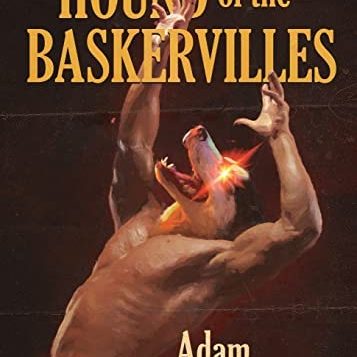ADAM MCOMBER’S new novel starts in a familiar way. Dr. John Watson is sent from London by Sherlock Holmes to investigate strange happenings at Baskerville Hall, a grim manor in remote Dartmoor. Charles Baskerville, the manor’s lord, has been killed, supposedly by a monstrous spectral hound. Without Holmes’ assistance, Watson tries to find the real murderer. Is it James Baskerville, the victim’s cousin and heir? Dr. Mortimer, the neighborhood physician? Or perhaps Barrymore, the Baskervilles’ manservant? Or could it be Beryl Stapleton and her brother, who are studying the moor’s unusual butterflies?
This is of course the set-up for Arthur Conan Doyle’s classic 1901 novel The Hound of the Baskervilles, but
Faced with such strange situations, Watson wonders if he’s hallucinating from all the laudanum he’s been taking. Sherlock Holmes has recently ended their long but secret love affair, and the liquid opioid is the only thing that helps Watson’s broken heart. The reader may also think they’re hallucinating, as the story becomes increasingly surreal. The corridors of Baskerville Hall seem to rearrange themselves, and the manor contains a doorway that may open into the distant past. A neighboring manor, Laughter Hall, contains a funhouse ride complete with papier mâché dinosaurs and a diorama of a futuristic Dartmoor city. Its owner, the eccentric Lord V, meets a particularly gruesome fate involving a telescope. As Watson tries to solve the deepening mystery, he also encounters tentacled monsters, murderous giants, Druidic sex rites, and the titular hound itself.
It’s a lot to pack into such a short novel, but McOmber keeps the focus on the hapless Dr. Watson. He’s middle-aged, losing his looks, suddenly alone, and the mystery at Baskerville Hall is possibly beyond his powers to solve. Can he transform himself from Holmes’ sidekick into a detective in his own right? Possibly, but as he comes to grasp the situation at Baskerville Hall, his mission changes from solving the mystery to saving himself and the other gay men around him. Watson may not be as observant or intelligent as Sherlock Holmes, but in McOmber’s telling he has the bigger heart.
Hound of the Baskervilles has some similarities to McOmber’s 2020 novel Jesus and John, in which the Apostle John and a newly resurrected Jesus try to escape from a labyrinthine villa in ancient Rome. Both novels feature heartbroken gay male protagonists wandering through surreal landscapes, but McOmber grounds Hound’s weirdness in some vividly written sex scenes and plenty of genre thrills. The novel actually spans several genres, including mystery, supernatural horror, Lovecraftian weird tale, and queer romance, but McOmber grapples with bigger themes like the limits of rationality and the nature of time. His clean, elegant prose adds a dash of literary fiction to the mix. There are also some surprisingly humorous sections, including one in which several characters try to determine the identity of a murder victim whose face has been completely obliterated by a large rock. It’s a gruesome scene but leavened with bitchy dialogue. I’m not quite sure how McOmber manages to makes all these disparate threads cohere in so few pages, but, as Dr. Watson learns, some mysteries are not meant to be solved but instead just experienced.
Peter Muise writes about New England folklore and legends.







